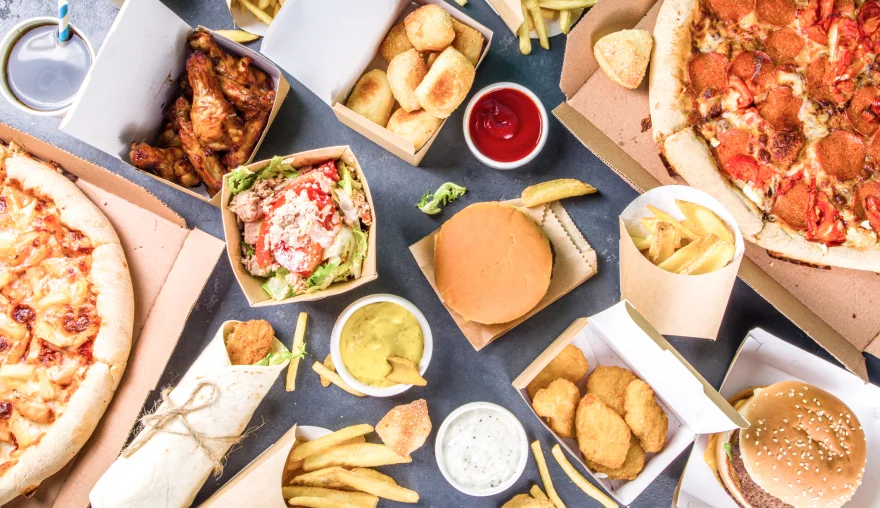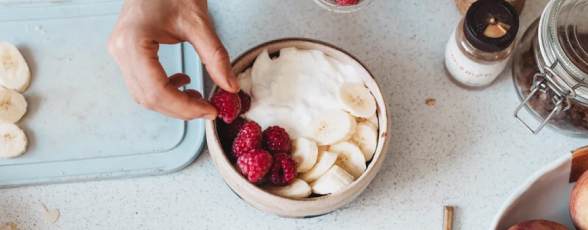Saxenda is a drug that reduces appetite at the hormonal level and, accordingly, helps to get used to smaller portions of food.
It has no incompatibility with certain products, so there are no strict rules for foods to avoid while on Saxenda and what to eat. Despite this, it is important to adjust your diet during the course of Saxenda. The main recommendations are to add sources of valuable elements (proteins, fats, carbohydrates, vitamins, minerals) and reduce the consumption of harmful foods.
Thanks to new eating habits, you will be able to maintain weight after finishing the treatment course and will generally feel better, because what you eat affects all the processes in your body. Find simple rules for diet correction in this article.
Foods to avoid while on Saxenda
Sugar and foods that contain sugar
It is important to reduce sugar intake even for those people who are not overweight. Sugar actively destroys protein cells – immunoglobulins (cells of the immune system), hormones, muscle cells, skin cells, and so on.
Moreover, excessive consumption of sugar can lead to the development of type 2 diabetes. This is how it works. When you eat sugar, your pancreas raises levels of the hormone insulin, which is supposed to bring your blood sugar back to normal. When you consume a lot of sugar, this process is gradually disrupted – the pancreas stops responding to sugar, and you need to get insulin from outside.
Foods that are often high in sugar:
- sweets, chocolate, candies,
- pastries, cakes,
- buns, cookies,
- instant breakfasts,
- semi-finished products,
- canned food,
- sweet, alcoholic and energy drinks,
- sauces.
High glycemic carbohydrate foods
Carbohydrate foods include cereals, fruits, vegetables, natural sweeteners, as well as sugar and sugary foods. Each carbohydrate food has a glycemic index, a number that indicates how high it raises blood sugar levels. Eating foods with a high glycemic index can also lead to the development of type 2 diabetes.
Sugar and all sugar-containing foods have a high glycemic index, so it is important to limit their consumption. Among other groups of carbohydrate foods, there are foods that have low, medium and high glycemic index.
Foods with a high glycemic index:
- honey, maple syrup,
- melon, banana, grapes,
- white rice,
- potato,
- processed white wheat products (pasta, bread, etc.).
Foods high in trans fats
Fatty foods are oils, nuts, seeds, and animal products (fatty meat and fish, fatty dairy products). They should be present in the diet.
It is worth limiting only the use of products that contain trans fats, that is, vegetable fats that manufacturers have artificially converted into a solid form. These foods increase the side effects of Saxenda – nausea, stomach pain, and so on.
Foods that may contain trans fats include:
- margarine;
- dairy products with a low percentage of fat;
- mayonnaise and other sauces;
- semi-finished products;
- chips and other snacks;
- fast food.
What to eat on Saxenda
Sugar free products
If you have a sweet tooth, replace sugary foods with their healthier options that contain sweeteners like coconut sugar. While the glycemic index of regular sugar is 70, the glycemic index of coconut sugar is exactly two times lower.
Grains with a low glycemic index
Note that you don’t need to completely refuse carbohydrate foods. They can be replaced with foods that have a lower glycemic index. For example, the index of white rice is 60, and the index of wild rice is two times lower.
Sweeteners with a low glycemic index
You can also find a healthier substitute for honey, whose glycemic index is 60. It can be replaced, for example, with Jerusalem artichoke syrup. First, its glycemic index is 13 to 17, depending on the manufacturer. Secondly, it contains a large amount of inulin, which is beneficial for intestinal health.
Berries, vegetables, fruits
Add more fruits, vegetables and berries to your diet. Most of them have a low and medium glycemic index. Ideally, you should consume at least 30 varied plant foods per week. To do this, use the rule of the rainbow – strive to ensure that you always have vegetable products of different colors on your plate.
Foods with healthy fats
Healthy fats are conditionally divided by origin into vegetable (oils, nuts, seeds) and animal (meat, fish, eggs, dairy products) types. They should be included in the diet in small amounts.
Protein sources
Useful proteins are also conditionally divided into vegetable (nuts, legumes) and animal (meat, poultry, fish, dairy products) types. All of them should be present in your diet. Ideally, opt for leaner protein sources. For example, choose lean veal, turkey or chicken.
Another important aspect is to choose healthy ways of cooking, for example, bake food in the oven, use a double boiler or slow cooker. Fry food as rarely as possible.
Subscribe to our blog
Get the latest insights.
Saxenda meal plan
A few rules to help you plan your diet:
- Start the day with protein foods – eggs, cottage cheese products, and so on.
- Add greens to your breakfast – spinach, arugula, lettuce, and so on.
- Eat sweets in the morning.
- Alternate protein foods – if you choose meat for lunch, give preference to fish or seafood for dinner.
- Add vegetables to every meal.
- For dinner, choose light sources of protein, such as fish or seafood.
- Don’t overeat.
Day 1
Breakfast
Spinach parmesan omelet with a slice of whole grain bread
Lunch
Turkey fillet with Greek salad and couscous
Dinner
“Nicoise” salad made of fresh vegetables with egg and canned tuna
Day 2
Breakfast
Cottage cheese pancakes with berries and Jerusalem artichoke syrup
Lunch
Roll with chicken fillet, hummus and baked vegetables
Dinner
Baked fish with fresh vegetables
Day 3
Breakfast
Israeli shakshuka with tahini and a slice of whole grain bread
Lunch
Lean veal steak with roasted vegetables
Dinner
Sauteed seafood and vegetables
If you are not sure that you can develop a proper diet yourself, order a personalized meal plan here. It will be developed for you by a professional nutritionist based on comprehensive Saxenda research. The nutritionist will determine the calorie content of the meal plan that you need, add foods that can reduce the side effects of the drug, and also support the health of the liver and nervous system.

Relevant article
How to Lose Weight on Ozempic: Foods to Avoid and Nutritional RulesConclusion
There are no strict restrictions during the course of Saxenda, since this drug does not have complete incompatibility with any products. However, some foods, such as foods with trans fats, may increase side effects. What’s more, Saxenda is not a magic pill that helps you lose weight on its own. Your task is to adjust the diet in order to increase the effectiveness of the drug and form eating habits. Ideally, see a nutritionist who can help you adjust your diet based on Saxenda research and your individual characteristics.

“Hayley Liew has credentials as both a Provisional Psychologist and a Practicing Dietitian ”




